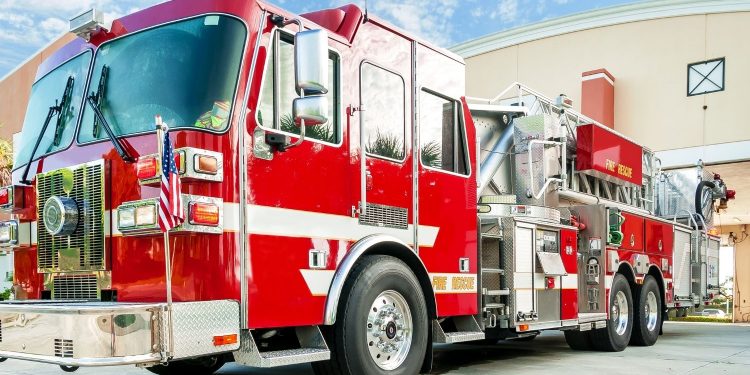While many use the terms interchangeably, fire trucks and fire engines are not the same. Here’s the difference between a fire truck and a fire engine.
Firefighters rely heavily on large vehicles such as fire trucks and fire engines to transport personnel and essential equipment to the scene of a fire. While many people use the terms “fire truck” and “fire engine” interchangeably, the two types of vehicles have several differences that distinguish them from one another. To better understand the difference between a fire truck and a fire engine, continue reading.
What Is a Fire Truck?
The main difference between fire trucks and fire engines is what they carry. Fire trucks are auxiliary vehicles that primarily transport firefighters, as well as their ancillary equipment. In short, they essentially function as a firefighter’s mobile toolbox.
The main types of equipment that fire trucks carry include ladders that extend from the trucks, power tools, first aid equipment, rescue gear, and other tools necessary to support firefighting efforts. Rather than focusing on controlling and extinguishing a fire, fire trucks function more in areas of rescuing people from the fire scene, providing medical attention, and saving lives.
What Is a Fire Engine?
Generally, fire engines arrive at the scene of a fire before fire trucks. In addition to transporting firefighters, the primary purpose of a fire engine is to carry the water tanks, hoses, and pumps necessary to help contain and extinguish fires. Like fire trucks, fire engines may also carry ladders. However, the ladders that fire engines carry do not attach to the vehicle itself. Instead, they detach from the vehicle so that firefighters can use them on their own.
There are several different types of fire engines, such as structure engines and wildland engines, which each function to combat different types of fires. The different types of fire engines have different classifications, numbered one through seven. Each of the seven engine types has varying requirements regarding their minimum number of personnel, hose length, and gross vehicle weight.



